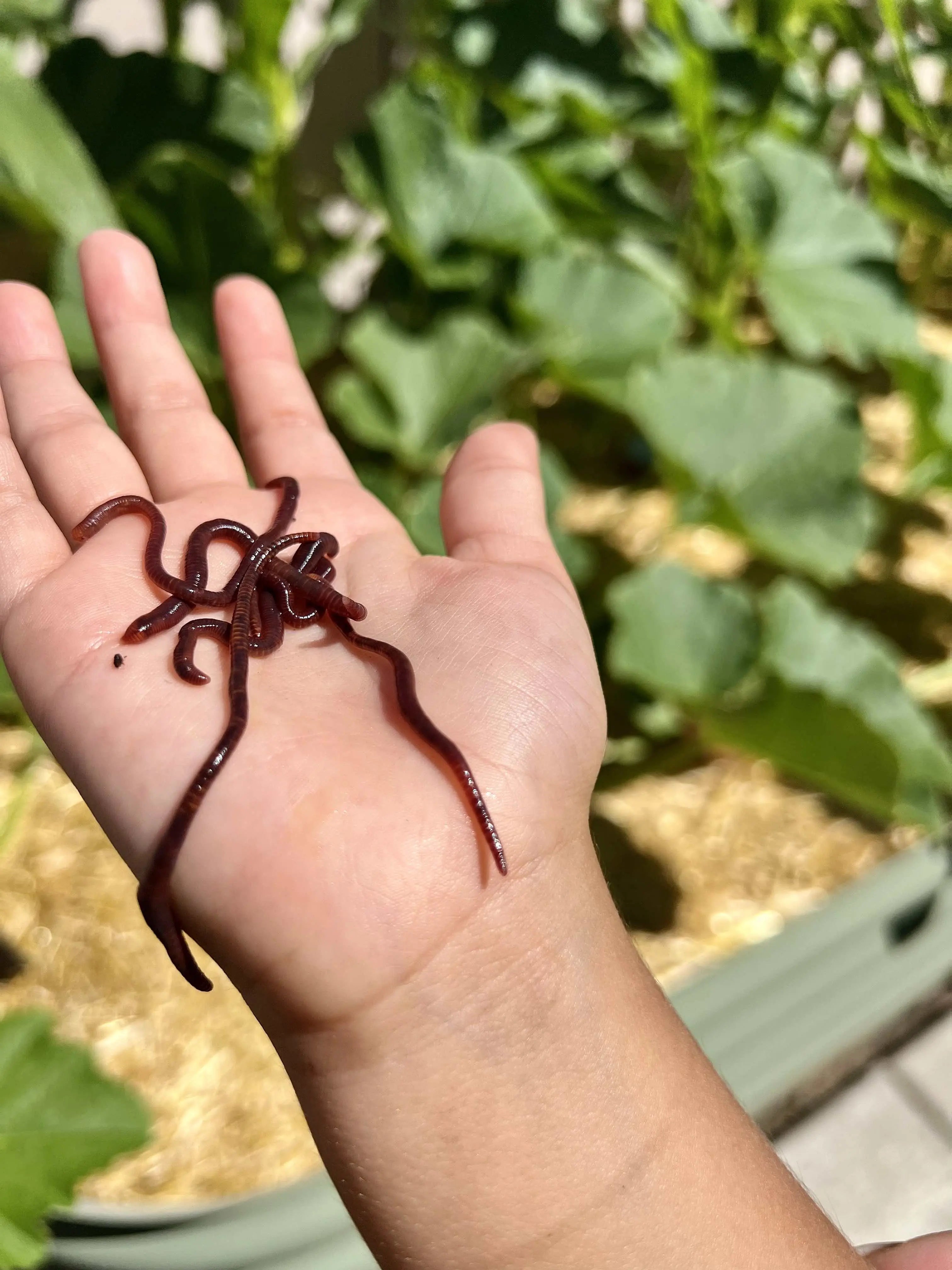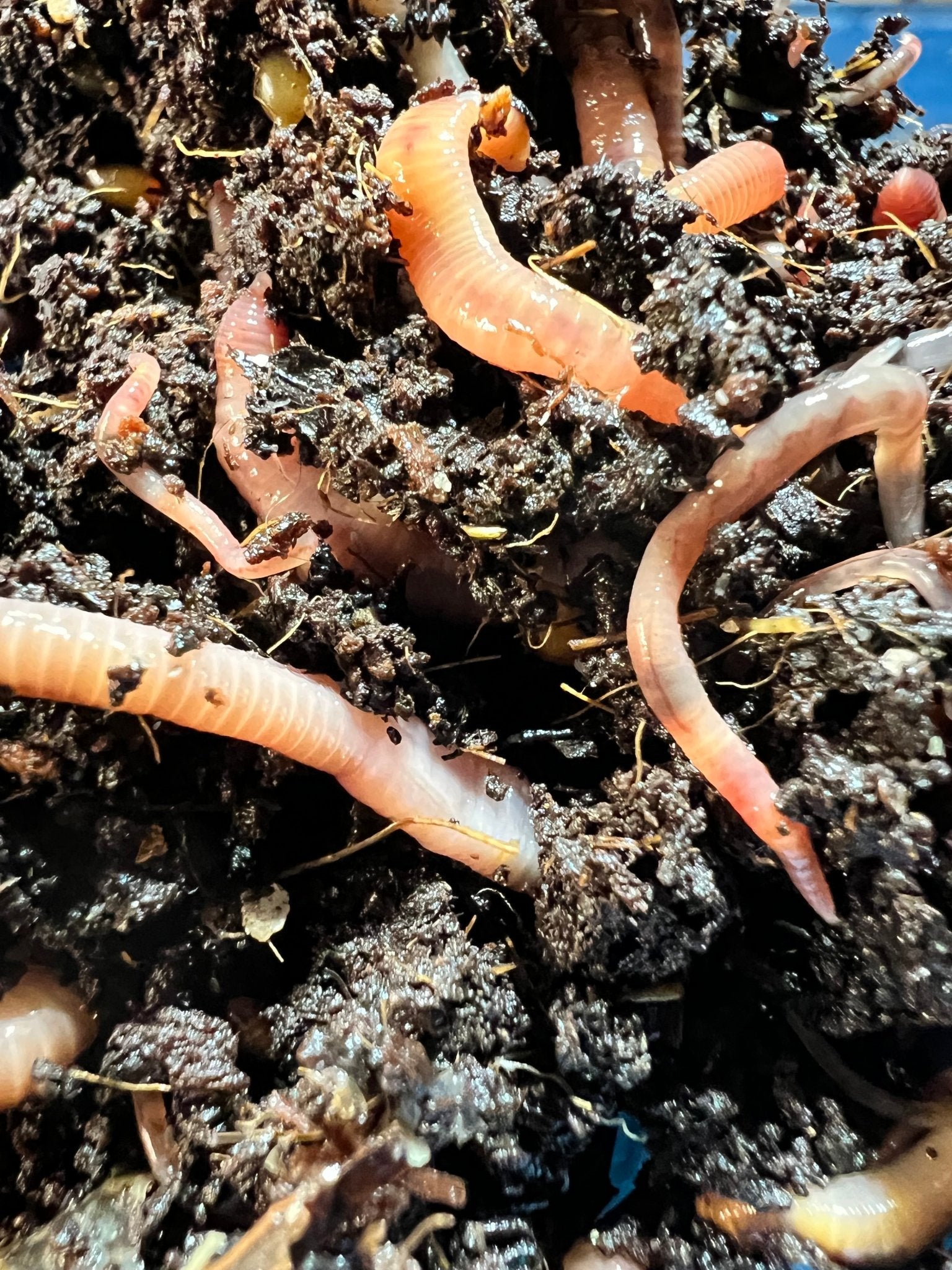Red Wiggler Worms - Reliable Decomposers for Your Compost Container
Wiki Article
Making The Most Of the Perks of Red Wiggler Worms: A Comprehensive Manual for Home Gardeners and Urban Farmers
In the world of sustainable gardening practices, red wiggler worms stand as unhonored heroes, quietly changing natural waste right into nutrient-rich castings that can function wonders for dirt health and wellness. As home gardeners and city farmers significantly seek cost-efficient and ecologically friendly methods to enhance their gardens, the possible benefits of utilizing the power of red wigglers can not be overstated. From reducing kitchen area waste to cultivating healthier plants, the usage of these simple animals uses a plethora of advantages. By discovering the intricacies of how to efficiently look after and optimize the benefits of red wiggler worms, individuals can unlock a riches of possibilities for improving the sustainability and productivity of their gardening undertakings.Understanding Red Wiggler Worms
Red Wiggler worms, renowned for their effective composting abilities, are a varieties of earthworms widely utilized in vermiculture techniques. These worms, medically understood as Eisenia fetida, grow in rotting organic material, making them suitable candidates for composting.One trick characteristic of Red Wiggler worms is their reproductive price. These hermaphroditic creatures possess both female and male reproductive organs, permitting them to duplicate quickly under favorable conditions. A fully grown Red Wiggler can produce numerous offspring in a brief duration, ensuring a constant population within a composting system.

Establishing a Worm Bin
When developing a worm container for vermiculture objectives, proper preparation and interest to information are important for developing a conducive atmosphere for Red Wiggler worms. Begin by choosing an ideal container for your worm container.
Area the worm bin in a great, dark location far from direct sunshine and severe temperature levels. On a regular basis keep track of the moisture degrees, adding water if the bed linens feels dry or flaky. Feed the worms a well balanced diet of vegetables and fruit scraps, preventing citrus fruits, onions, and spicy foods. By following these actions, you can establish a flourishing worm container that will successfully process organic waste right into nutrient-rich vermicompost for your garden.
Feeding and Keeping Worms
Ensuring a balanced and healthy diet regimen is critical for the health and wellness and efficiency of Red Wiggler worms in a vermiculture system. Red Wigglers are ravenous eaters, capable of eating their very own body weight in organic matter daily. To keep a thriving worm populace, it is vital to offer them with a variety of food scraps such as fruit and veggie peels, coffee grounds, tea bags, and crushed eggshells. It is crucial to avoid feeding them citrus fruits, onions, garlic, dairy products, meat, and oily foods as these can be harmful to the worms or cause undesirable odors in the bin.Correct moisture degrees are also vital for the health of Red Wiggler worms. The bedding must feel like a damp sponge, providing sufficient wetness for the worms to breathe with their skin. Consistently examine the moisture levels and readjust by adding water or completely dry bedding product as required. Furthermore, keeping appropriate temperature level problems between 55-77 ° F(13-25 ° C )will guarantee ideal worm activity and reproduction. By carefully checking their diet regimen, moisture, and ecological conditions, home garden enthusiasts and metropolitan farmers can maintain a effective and healthy and balanced Red Wiggler worm populace for composting functions.
Gathering Worm Spreadings
To effectively extract nutrient-rich worm castings from the vermicompost, an organized harvesting process is necessary for maximizing the composting advantages. The first step in harvesting worm castings is to motivate the worms to move to one side of the bin.After the spreadings have been gathered, it is essential to separate any kind of continuing to be worms from the spreadings to prevent damaging them during storage space or application. One reliable technique is to create cone-shaped stacks of spreadings under bright light. Worms will naturally move away from the light, allowing for simple separation and elimination.
Lastly, the gathered worm castings ought to be saved in a trendy, dark, and dry location to maintain their quality and efficiency as a nutrient-rich dirt amendment. By complying with these steps, home gardeners and urban farmers can make the most of the benefits of red wiggler worms in their vermicomposting systems.
Using Worm Castings in Horticulture
The unification of nutrient-rich worm castings right into garden dirt can substantially boost plant development and total dirt health and wellness. Worm castings, additionally referred to as vermicast, are an all-natural plant food created by red wiggler worms as they break down organic matter. These castings are abundant in essential nutrients like nitrogen, phosphorus, potassium, and advantageous germs that advertise plant growth and enhance soil structure.When utilizing worm castings in horticulture, it is important to blend them completely into the dirt or utilize them as a top dressing around plants. The slow-release nature of worm castings ensures a stable supply of nutrients to plants gradually, reducing the risk of nutrient leaching and promoting long-lasting soil fertility. Additionally, worm castings assist improve soil oygenation, water retention, and microbial activity, developing a healthy and balanced atmosphere for plant roots to prosper.

Conclusion
In final thought, the utilization of red wiggler worms in home gardening and urban farming can dramatically profit dirt health and wellness and plant growth. By comprehending how to set up and maintain a worm container, feed the worms effectively, and gather their nutrient-rich spreadings, gardeners can optimize the benefits of these earthworms.In the realm of sustainable gardening practices, red wiggler worms stand as unsung heroes, quietly transforming organic waste right into nutrient-rich castings that can function marvels for soil health.When establishing a worm container for vermiculture purposes, appropriate preparation and interest to detail are important for creating a conducive setting for Red Wiggler worms. The very first action in collecting worm castings is to encourage the worms to move to one side of the bin. Worm castings, additionally known as vermicast, are a natural plant food generated by red wiggler worms as they damage down organic matter. By comprehending how to set up and preserve a worm bin, feed the worms click now properly, and collect their nutrient-rich pop over to these guys castings, garden enthusiasts can make best use of the advantages of these earthworms.
Report this wiki page